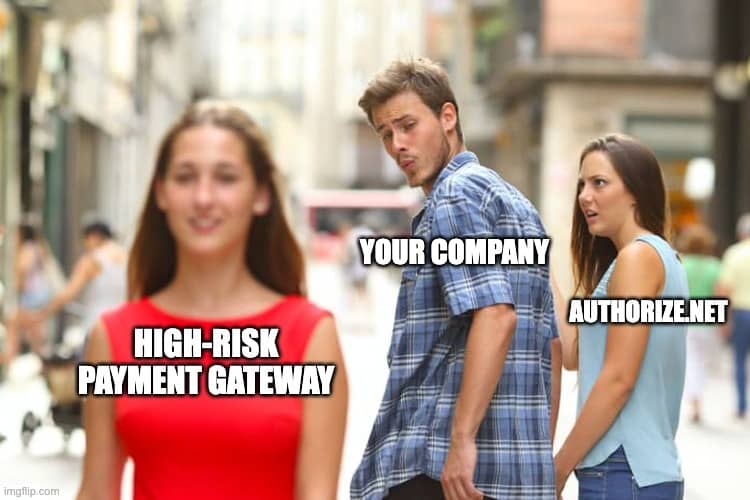Mastercard Chargeback Reason Codes 2023

For a business owner, a few things are more annoying than chargebacks. There’s nothing quite like the feeling you get when you see the dreaded Mastercard chargeback reason code pop up on your terminal.
Whether they’re from Mastercard, VISA, Discover, or American Express, chargebacks can cost you time and money. They can result in lost sales and may even cause you to lose your customer’s good faith, even if the reason for the chargeback has nothing to do with your products or services.
The moment you see a Mastercard chargeback reason code appear on your screen, you know that there’s going to be a problem with the transaction. That’s why it often helps to know exactly what the code means, so you can determine if there’s anything you can do to save the sale. Typically, Mastercard chargeback reason codes don’t reveal very much, so even if you know what they mean, in many cases this may not offer much insight into the real issue behind the chargebacks. However, if the code relates to issues such as goods or services not arriving, this can tip you off that you need to become proactive in tracking down a missing delivery.
If high chargeback rates are preventing you from getting payment processing services for your business, Zenti can help. As a leading provider of merchant account services for high-risk businesses, Zenti gives you the tools you need to help prevent chargebacks and enables you to offer your customers convenient, secure payment options that can help boost your business.
Table of Contents
- What is a chargeback?
- What is a Mastercard chargeback reason code?
- Mastercard chargeback reason codes at a glance
- When chargebacks are legitimate: Good reasons for chargebacks
- When chargebacks aren’t so legitimate
- Chargebacks and friendly fraud
- How many chargebacks are allowed for businesses?
- Can chargebacks be denied?
- Tips for preventing chargebacks
What is a chargeback?
A chargeback is a reversal of charges on a customer’s credit card. Typically, this refund is initiated by the bank that issues the credit card, rather than by the merchant who sold the item. Chargebacks can be initiated by the customer (or merchant), or by the issuing bank.
Whenever there’s a chargeback, the credit card company issues a chargeback reason code for the transaction. Mastercard, VISA, Discover, and American Express each have their own code language to designate specific chargeback reasons.
What is a Mastercard chargeback reason code?
A Mastercard chargeback reason code is a code number that’s assigned to one or more specific chargeback issues when a Mastercard is declined. As part of its processing structure, Mastercard categorizes chargebacks into four main categories:
- Authorization
- Fraud
- Card Member Disputes
- Processing Errors (which Mastercard calls “point-of-interaction errors”).
Some Mastercard chargeback reason codes act as a single “umbrella code” for multiple issues, which may seem confusing if you’re trying to decipher a chargeback issue. Likewise, some issues may appear under multiple code numbers, because they happen to fall under more than one category.
Mastercard chargeback reason codes at a glance
Here’s a [comprehensive list of Mastercard chargeback reason codesthat you might see on your screen:
4807: Warning Bulletin File
4808: This code can refer to:
- Account Number Not on File
- Required Authorization Not Obtained
- Multiple Authorization Requests
- Cardholder-Activated Terminal (CAT) 3 Device
4812: Account Number Not on File
4831: Transaction Amount Differs
4834: This code can refer to:
- Point-of-Interaction Error
- Transaction Amount Differs
- Late Presentment
- Point-of-Interaction Currency Conversion
- Duplication/Paid by Other Means
- ATM Disputes
- Loss, Theft, or Damages
4837: No Cardholder Authorization
4840: Fraudulent Processing of Transactions
4842: Late Presentment
4846: Correct Transaction Currency Code Not Provided
4849: Questionable Merchant Activity
4850: Installment Billing Dispute
4853: This code can refer to:
- Cardholder Dispute of a Recurring Transaction
- Goods or Services Not Provided
- No-Show Hotel Charge
- Addendum Dispute
- Credit Not Processed
- Goods/Services Not as Described or Defective
- Digital Goods $25 or Less
- Counterfeit Goods
- Transaction Did Not Complete
- Credit Posted as a Purchase
4854: Cardholder Dispute Not Classified Elsewhere (only for US transactions)
4855: Goods/Services Not Provided
4859: This code can refer to:
- No Show
- ATM Dispute
- Addendum
4860: Credit Not Processed
4863: This code can refer to:
- Cardholder Does Not Recognize
- Potential Fraud
4870: Chip Liability Shift
4871: This code can refer to:
- Chip/PIN Liability Shift
- Lost/Stolen/Never Received Issue (NRI)
- Fraud
4999: Domestic Chargeback Dispute (Europe only)
For more in-depth information on these codes, Mastercard publishes a complete online Chargeback Guide that goes into even greater detail.
As a merchant, there’s no need for you to memorize Mastercard chargeback reason codes. A basic familiarity with them should be sufficient, because in many instances, the ensuing issue is between the card issuer and the cardholder.
However, as a merchant, you can be proactive in limiting your chargeback rates. With Zenti’s full line of merchant account services, we can help you streamline your payment options so you can reduce your chargeback ratio.
When chargebacks are legitimate: Good reasons for chargebacks
Customers commonly request chargebacks from their issuing bank for the following reasons:
- Duplicate processing (the customer was accidentally charged twice)
- Goods or services weren’t received
- Dissatisfaction with goods or services
- No cardholder authorization (customer claims that they never made the purchase)
- Questionable merchant activity (the merchant doesn’t respond to return requests)
- Suspected counterfeit merchandise
- Incorrect transaction amount
In many cases, customers initiate chargeback disputes when they haven’t received specific goods or services, or because they were erroneously charged for goods or services that they didn’t purchase. The latter may either be due to a clerical error or, as is often the case, because of a fraudulent transaction. These are entirely legitimate reasons for chargeback disputes, and credit card issuers usually respond promptly by issuing a full refund to the cardholder’s account.
When chargebacks aren’t so legitimate
Unfortunately, chargebacks can provide fraudsters with an easy way to scam merchants, as well as credit card companies. For example, a scammer may purchase an item online, then claim that it wasn’t delivered (when it was) and request a chargeback. This way, the scammer gets the item for free. Likewise, scammers also purchase a service, such as a tattoo or a spa treatment, then complain about its quality and request a chargeback. Since the service can’t be returned, a savvy scammer can fraudulently present a seemingly compelling case and end up getting an expensive service without having to pay a cent for it.
The numbers tell the story, and these are far from isolated incidences. A study by Juniper Research estimated that during 2021, global e-commerce merchants were slated to lose approximately 20 billion USD through criminal activity, including fraudulent chargebacks. And according to Mastercard, a staggering 80 percent of all chargebacks are fraud-related. Because of numbers like these, when credit card issuers like Mastercard see a large number of chargebacks on a customer’s account, they consider it to be a major red flag.
Chargebacks and friendly fraud
In addition to standard customer chargebacks, fraudulent chargebacks, and bank-initiated chargebacks, there’s one other type that victimizes merchants: “friendly fraud.” Friendly fraud chargebacks happen when a customer makes a charge and then disputes it and claims they didn’t authorize it. However, in cases of friendly fraud, the customer doesn’t intend to scam anyone, and it’s not done with malicious intent. One example of friendly fraud would be if a customer gets charged for visiting a strip club, and a significant other sees the charge on the monthly bill. Rather than admitting a visit to the strip club, the customer might call the credit card company and say the charge is fraudulent.
Whatever the reasons for it, statistics show that six out of every 10 chargebacks involve some type of friendly fraud. And even though it’s not intended to be malicious, the results can be just as damaging to your business.
How many chargebacks are allowed for businesses?
Is there a limit to how many chargebacks a business can have before being penalized? In a word, yes. Average industry chargeback rates hover around one percent, which equates to one chargeback per every 100 orders. Essentially, if you have a higher rate than that, you could be categorized as a high-risk business. In addition to hurting your revenues, this could also prevent you from getting much-needed payment processing services.
As a national leader in high-risk merchant account services, Zenti helps high-risk businesses get approved for all types of payment options, plus provides solutions for managing chargebacks and other payment issues. By using Zenti’s professional management tools and financial services, you can prevent chargebacks from impacting your revenues and your success.
Can chargebacks be denied?
Banks can deny chargebacks if they feel that the customer hasn’t presented enough evidence to justify the refund, or if they feel that the reason isn’t a legitimate one. Merchants can also provide evidence to refute a chargeback claim.
Likewise, merchants can refuse to issue chargebacks if they feel that the customer’s reasons aren’t legitimate. As a merchant, if you feel that a chargeback is wrong, you can fight it via chargeback representment, where you’re allowed to present the charge a second time. If you do this, however, you’ll have to present evidence to refute the customer’s chargeback claim. This evidence can include:
- Information showing the transaction period, including the transaction date and timestamp
- CVV, AVS, and delivery verification for delivered items
- Signed delivery transaction receipts
- All communication between you and the customer
- Any cardholder history relating to the issue
As a merchant, in any cardholder dispute or chargeback representment case, the more data and evidence you can bring to the table, the better chance you’ll have of winning the dispute. Once you present your evidence, it will be passed from the acquirer to the credit card network. If the issuer agrees that you’ve presented compelling evidence to justify your claim, they’ll reverse the chargeback and return your funds to your merchant account. However, you’ll still have to pay a chargeback fee, and unfortunately, the initial chargeback will still be added to your overall chargeback ratio.
If you have a high-risk merchant account, you may be paying huge fees each month due to high chargeback rates. Zenti can help you find the best, most affordable payment processing systems to help you mitigate these chargeback ratios, no matter what industry you’re in.
Tips for preventing chargebacks
If you’re tired of seeing Mastercard chargeback reason codes appear in your transactions, or chargeback codes from VISA, Discover, or American Express, these tips can help you prevent high chargeback rates in your business:
- Make your return policy clear.
- Always provide detailed, accurate descriptions of your goods and services. If you have an e-commerce business, include plenty of photos.
- Always ask for CVV codes during a transaction. This adds more assurance that the customer is legitimate, because CVV codes are difficult for criminals to steal unless they physically have the card in hand.
- In online transactions, always ask the customer for their billing address so it can be compared to the cardholder address on file with the Address Verification Service (AVS). If it’s not a match, the card information may have been stolen.
- Consider investing in 3-D Secure Protocol (3DS) protection, which enables customers to enter a private security code for each transaction. This adds yet another layer of protection by allowing cardholders to further validate their identity at the point of sale.
- Offer exemplary customer service. Satisfied customers usually don’t ask for chargebacks. And if there’s a problem, a calm, professional, positive response can go a long way toward diffusing a customer’s frustrations.
If you’re worried about the high rates of chargebacks in your business, Zenti can help. As one of the nation’s leading merchant services providers, we can help you get approved for all types of payment processing options, including credit cards, debit cards, e-checks, and mobile app payments. Plus, we provide tools to help mitigate chargeback rates, and guidance to help you streamline your system with fast and easy invoicing and billing methods. If you’re ready to boost your business and increase customer satisfaction, be sure to contact Zenti and find out how we can help you take your business to the next level of success.
Read Next

Find out whether Authorize.Net works for high risk merchants, what restrictions you might face and how to get approved.

Get expert advice on selling CBD products on Shopify, including compliance tips and setting up secure payment options.

Find out why Square may deactivate merchant accounts and steps to resolve issues and maintain uninterrupted payment services.
Need a High-Risk Merchant Account?
Disruption-free payment processing at the best price for your situation, guaranteed.
Get Free Guidance Now!